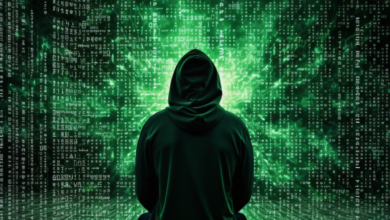The Human Factor: Why Social Engineering Works and How to Fight Back
Overcoming Human Vulnerabilities in the Cybersecurity Landscape

Unraveling the Human Enigma in Cybersecurity
In the ever-evolving world of digital security, there’s an intricate dance between technology and the nuances of human behavior. While cutting-edge tech solutions and formidable firewalls are developed, it’s often the unpredictable facets of human nature—our emotions, our built-in trust, and our unique behavior patterns—that cyber adversaries exploit. These very human attributes, which define our interactions and decisions, can become potential loopholes in the vast digital fortress we attempt to construct.
But herein lies an essential paradox. As much as humans are identified as the weak link in cybersecurity chains, they also hold the key to the strongest defenses. This duality is at the heart of the cybersecurity challenge. For every individual who may inadvertently click on a malicious link due to a momentary lapse in judgment, there’s another equipped with the awareness and tools to thwart a potential cyber threat.
As we delve deeper into this article, we’ll explore how the very vulnerabilities that make us susceptible to cyber threats can be transformed. With the right combination of education, awareness, and technology, humans can not only guard against these threats but become the linchpin in a robust digital defense strategy. The journey from human vulnerability to robust digital security is both challenging and enlightening, shedding light on how, in the digital age, our greatest strength might just lie in understanding our inherent weaknesses.
The Psychological Draws of Social Engineering
The essence of social engineering is exploiting human emotions and responses. Crafty cybercriminals cleverly infuse deceit, a sense of urgency, and social contexts into plots that sidestep technological safeguards. As evolutionary beings, traits like trustworthiness, helpfulness, and prompt reactions to emergencies can be manipulated against us. The first defense line is acknowledging our inherent vulnerabilities.
Consider a meticulously crafted email from a supposed colleague pleading for an immediate wire transfer. In such instances, an innate trust and a desire to assist might eclipse logical reasoning, leading to dire implications.
Educational Initiatives: The Forefront of Defense
In the ever-evolving landscape of cybersecurity, awareness and education consistently emerge as paramount defenses. While technology continues to advance at breakneck speeds, ensuring that individuals are equipped with the latest knowledge and practical skills remains crucial. This is where targeted educational initiatives come into play.
- Comprehensive Cybersecurity Training: Regular, comprehensive training modules that are updated to reflect the latest threats and best practices play a pivotal role in shaping the human element of an organization’s security framework. Such training shouldn’t merely be a yearly tick-box exercise but an ongoing commitment. By simulating real-world cyber threat scenarios, employees can be better prepared for actual attacks.
- Simulated Phishing Campaigns: One of the most potent tools in this endeavor are simulated phishing campaigns. Platforms like GoPhish and PhishMe allow organizations to craft and launch realistic phishing attacks on their own teams, helping to identify vulnerabilities within the employee base. When an employee falls for one of these mock attacks, it provides an immediate learning opportunity. Over time, these campaigns can show trends in increased awareness and improved response times.
- Hands-On Workshops: Beyond theoretical knowledge, hands-on workshops can be instrumental. Interactive sessions where employees work with tools such as Wireshark to dissect network traffic or John the Ripper to understand password vulnerabilities can provide a deeper comprehension of the intricacies involved. These workshops can be led by internal cybersecurity experts or external consultants.
- Gamified Learning Experiences: Gamification of learning experiences can also be a powerful tool. Platforms like Hack The Box or CyberSecLabs offer gamified environments where individuals can practice penetration testing and other cybersecurity skills in real time, learning from challenges and improving their skills in a competitive and fun environment.
- Periodic Knowledge Checks: Utilizing quizzes and assessments after training sessions can ensure retention and comprehension. Tools like Kahoot! or Quizlet can make this process engaging and can provide immediate feedback to employees, helping them identify areas they might need to revisit.
- Online Courses and Webinars: Encouraging employees to enroll in online courses from platforms like Coursera, Udemy, or Pluralsight can further bolster their cybersecurity knowledge. Webinars led by cybersecurity experts, discussing recent threats and defenses, can also provide fresh perspectives and insights.
By investing in these educational initiatives, organizations not only empower their workforce to detect deceptive tactics but also ensure that they are equipped with the tools and know-how to neutralize them. When individuals can perceive the deeper, often-hidden motives behind cyber threats, they become significantly less likely to fall for surface-level deceits like dubious emails.
Promoting a Cybersecurity-conscious Culture
In the digital age, where threats lurk in every corner of the internet, fostering a cybersecurity-conscious culture within organizations is not just beneficial—it’s imperative. Such a culture moves beyond mere technology and focuses on ingraining cybersecurity awareness into the ethos of every team member. Here’s how companies can cultivate and nourish a culture where cybersecurity is prioritized and valued:
- Leadership Involvement: For any initiative to gain traction, it must start at the top. Leaders should visibly support and participate in cybersecurity programs and practices. CEOs, for example, can actively participate in cybersecurity training sessions, showcasing their commitment. Platforms like Cyber Chief provide executive training tailored for leadership roles, emphasizing the importance of cybersecurity at the highest levels.
- Continuous Communication: Regular updates about the latest threats, successful defense stories, or even near-miss incidents can serve as continuous reminders. Tools such as Slack or Microsoft Teams can be utilized to create dedicated channels where cybersecurity tips, news, and best practices are shared.
- Reward and Recognition: Recognize and reward cybersecurity vigilance. For instance, employees who successfully identify a mock phishing email or who contribute to improving the company’s cybersecurity posture can be acknowledged in company newsletters or given incentives. Gamification platforms like Infosec IQ can help in driving such initiatives by creating competitive cybersecurity challenges.
- Encourage Open Reporting: Foster an environment where employees feel safe reporting potential threats or admitting to mistakes without the fear of punitive actions. Tools like Whistleblower Security can provide anonymous reporting channels, ensuring that potential threats or vulnerabilities don’t go unnoticed.
- Collaborative Workshops: Host collaborative workshops where cross-functional teams come together to discuss potential vulnerabilities and brainstorm solutions. This not only keeps cybersecurity top-of-mind but also promotes a sense of collective responsibility. Softwares like Miro or Trello can be excellent tools for these collaborative brainstorming sessions.
- External Expert Sessions: Occasionally bring in external cybersecurity experts for sessions. Their fresh perspective, combined with insights from real-world experiences, can provide invaluable lessons. Platforms like BrightTALK offer webinars and talks by industry-leading cybersecurity professionals.
- Cybersecurity Days or Weeks: Dedicate specific days or even an entire week to cybersecurity awareness. Engage in activities, quizzes, workshops, and challenges that highlight the importance of cybersecurity. Tools like KnowBe4 offer security awareness training materials suitable for such dedicated events.
- Integrate with Onboarding: Ensure that every new employee, from the moment they join, understands the importance of cybersecurity. Onboarding platforms like WorkBright or BambooHR can integrate cybersecurity modules as a part of the induction process.
By steadfastly promoting a cybersecurity-conscious culture, organizations not only safeguard their digital assets but also foster trust among their stakeholders. In this age of rampant cyber threats, such a culture is no longer a luxury but a necessary foundation for any forward-thinking enterprise.
Benefits of Two-Factor Authentication
In our interconnected world, the complexities of cybersecurity grow daily, and the traditional password-based systems have shown their vulnerabilities time and again. Enter two-factor authentication (2FA), a technological advancement that reinforces the barriers against unauthorized access. With 2FA, security moves beyond the confines of a simple password, adding an indispensable layer of protection that has several notable benefits.
One of the most apparent advantages of 2FA is its enhanced security. While cyber attackers might deploy sophisticated methods to crack or steal passwords, 2FA demands a second piece of evidence to verify a user’s identity. This could be something they know (like a pin), something they possess (like a smartphone or token), or something inherent to them (like fingerprints or facial recognition). As a result, even if a hacker gains access to a password, they’re stymied by the requirement of this second authentication factor.
Furthermore, 2FA significantly reduces the risks associated with compromised passwords. Many users, despite advice to the contrary, still resort to using easily guessable passwords or employing the same password across multiple platforms. With 2FA in place, the damage potential of these common lapses is significantly curtailed, as cyber intruders would need more than just the password to breach an account.
Moreover, the implementation of 2FA serves as a deterrent in itself. When cyber adversaries identify that an extra layer of security is in place, they’re more likely to move on to easier targets, thereby indirectly reducing the threat to systems protected with 2FA. This sense of heightened security can also enhance trust among customers and clients, assuring them that their data and interactions are safeguarded with top-tier security measures.
Not to be overlooked is the adaptability and versatility of 2FA. As technology continues to evolve, so do the methods for the second authentication factor. Today’s 2FA mechanisms range from SMS-based codes to app-generated tokens, push notifications, and advanced biometrics, providing organizations with a range of options tailored to their needs.
In conclusion, in a digital landscape rife with evolving threats, two-factor authentication emerges as a paramount defense strategy. Its multifaceted benefits not only strengthen security postures but also foster trust, making it an essential component of modern cybersecurity protocols.
Physical Security: The Unsung Hero in the Cybersecurity Symphony
While we’ve grown accustomed to battling threats in the virtual world, there’s an equally pressing need to fortify our physical bastions. The fusion of the tangible and digital realms in our modern workplaces means that lapses in on-the-ground security can open doors—both literal and metaphorical—to cyber threats.
The art of social engineering doesn’t solely reside in digital deceptions. Tactics such as tailgating, where malicious actors subtly follow employees through secured doors, or baiting, where they leave malware-laden devices in locations for unsuspecting victims to find and use, exploit human psychology in physical spaces. These methods underline the urgency of maintaining robust physical security measures to complement our digital defenses.
Key cards and biometric systems, such as fingerprint or retina scanners, offer a first line of defense, ensuring that only authorized personnel gain entry to sensitive zones. But it’s not enough to merely install these systems; their effectiveness lies in rigorous adherence to protocols. A biometric entry system, no matter how advanced, loses its efficacy if employees hold the door open for strangers out of courtesy.
Moreover, a vigilant security staff trained not just to monitor but to understand the nuances of social engineering can be invaluable. For instance, security personnel equipped with the knowledge of common tactics can easily spot when an individual tries to “piggyback” on another’s access or when someone is attempting to engage in manipulative conversation to extract sensitive information.
Furthermore, organizations can benefit from fostering a culture where questioning and reporting are the norm. Periodic drills and simulations can serve dual purposes: they can test and hone the response of both employees and security personnel, and they can also instill a sense of mindfulness. When staff members regularly engage in exercises that mimic real-life security breaches, they become more adept at spotting anomalies, whether it’s an unfamiliar face in the office or a misplaced device that could be a potential threat.
To emphasize the point, consider that many high-profile cyber breaches have started with a simple physical intrusion—someone gaining unauthorized access to a building or leaving a malware-infected USB drive in a convenient location. In such a landscape, the marriage of physical and digital security isn’t just a good practice; it’s a quintessential aspect of a holistic cybersecurity approach.
As we continue our journey into an era where the boundaries between the physical and virtual worlds blur, it becomes increasingly clear that physical security must claim its rightful place alongside its digital counterpart. Only then can we construct a fortress that’s truly resilient to the multifaceted challenges of today’s cybersecurity landscape.
Adaptive Behavior Monitoring: The Pulse of Modern Cybersecurity
In the ever-evolving domain of cybersecurity, understanding the regular rhythms and patterns of users can be a keystone in preempting threats. As cyber attackers become increasingly sophisticated, relying solely on traditional defense mechanisms might leave vulnerabilities exposed. Enter behavioral analytics—a transformative approach that prioritizes understanding over mere observation.
Behavioral analytics in cybersecurity transcends the simplicity of monitoring. It delves into the very essence of user behavior, creating a dynamic profile that captures the usual activities, access patterns, and digital habits of a user. By establishing a ‘digital fingerprint’ of sorts for each user, these tools can effectively differentiate between legitimate actions and potential threats.
Imagine a finance executive who typically accesses sensitive financial data during regular business hours from a specific IP range. Now, what if there’s an attempt to access this data in the wee hours of the night and from a location halfway across the world? Even if the correct credentials are used, the deviation from the established behavioral norm would raise red flags. This is the power of behavioral analytics: the ability to discern potential threats even when they’re cloaked in the guise of legitimacy.
Moreover, with the rise of remote work and distributed teams, relying on static security protocols is no longer tenable. The distinction between ‘usual’ and ‘unusual’ is blurring, necessitating a more nuanced approach. Behavioral analytics offers this nuance, adapting in real-time to changing user patterns. For instance, if our aforementioned finance executive starts working on a project that requires late-night inputs or accesses data from a new location during a business trip, the system would adjust its understanding over time, reducing false positives.
However, the potency of behavioral analytics isn’t just in its reactive capabilities but also its proactive potential. By continuously mapping and updating user behavior profiles, these tools can provide insights into areas of potential vulnerability. If, for instance, a subset of employees frequently bypasses a certain security protocol out of convenience, the organization can address this habit before it becomes a significant security risk.
In the context of our ongoing battle against social engineering threats, where cyber attackers exploit human tendencies for malicious gain, understanding these very tendencies becomes our secret weapon. By transforming our knowledge of human behavior from a potential Achilles’ heel into a robust defense mechanism, we take a significant leap forward in our quest for uncompromised digital security.
Incorporating behavioral analytics into our cybersecurity armory doesn’t just signify adopting another tool—it reflects a paradigm shift. It epitomizes the realization that in the world of cyber threats, understanding and adapting to human behavior is as crucial, if not more so, than understanding the code and algorithms that power our digital infrastructure.
Real-world Reverberations: Human Vulnerabilities Manifested in Digital Catastrophes
When discussing the complex tapestry of cybersecurity, it’s often abstract concepts and intricate technologies that take center stage. However, real-world incidents, where the consequences of overlooking human behavior ripple through organizations, bring the issues into sharp, tangible focus. A couple of standout events emphasize the human element’s profound impact on the cybersecurity paradigm.
- The Anthem Data Maelstrom: Anthem, a leading light in the health insurance sector, suffered a seismic shock in 2015. The magnitude? A data breach left the personal information of a staggering 78.8 million clients in the open, all stemming from a lone employee who was ensnared by a phishing lure. This breach wasn’t just about numbers—it was a chilling testament to the vulnerabilities ingrained in human nature. The Anthem debacle showcased the ripple effects of a singular lapse in judgment, casting a spotlight on the pivotal role every individual plays in the overarching cybersecurity landscape. It underlined that even the most fortified digital bastions can crumble due to a momentary human oversight.
- Snapchat’s Misguided Trust: Fast forward to 2016, and the digital realm witnessed another cautionary tale—this time from the camp of the social media giant, Snapchat. An unsuspecting employee, swayed by a deceptively authentic request, handed over payroll details to an imposter masquerading as the company’s CEO. The incident wasn’t just a breach—it was a stark reminder of the perils of misplaced trust in the digital age. Beyond the immediate fallout, it served as a clarion call, emphasizing the dire need for reinforced verification processes. It underscored the essentiality of cultivating a culture where every communication, even if it seems to come from the highest echelons of authority, is approached with informed scrutiny.
These incidents aren’t mere blips on the cybersecurity radar. They epitomize the intricate interplay between human frailties and digital defenses. While technology continues to evolve, offering robust barriers against external threats, the human element remains both a potential weak link and an invaluable asset. These illustrative cases emphasize the urgency of melding technological advancements with an acute understanding of human behavior, ensuring that our defenses are fortified not just against codes and hacks but against the nuances of human nature itself.
Addressing Insider Threats and Prioritizing Secure Communication
In the complex labyrinth of cybersecurity, external threats often dominate the narrative. However, delving deeper, it becomes evident that internal threats can be just as, if not more, damaging. These threats don’t always arise from malicious intent; sometimes, they stem from mere oversight, lack of awareness, or inadvertent errors. Insiders, with their privileged access to systems and data, can inadvertently become conduits for security breaches, especially if they communicate over non-encrypted channels or are unaware of security protocols.
Understanding the potential risk posed by insiders necessitates a holistic approach to cybersecurity. Organizations must foster a culture of transparency and trust, where employees feel empowered to report anomalies without fear of repercussions. A key aspect of this is implementing robust whistle-blower mechanisms that not only encourage reporting of suspicious activities but also ensure protection for those raising the alarm. Such a culture deters potential insider threats and ensures that unintentional missteps are promptly addressed and rectified.
Parallel to addressing the human element, there’s an undeniable need to fortify the technical infrastructure. This involves institutionalizing secure, encrypted channels for all official communications. In our age of digital proliferation, this doesn’t just mean securing email traffic. Instant messaging tools, video conferencing platforms, and even mobile communication apps—all these can be potential gateways for cyber threats if not properly secured. An organization’s digital communication streams should be as impenetrable as its physical walls. Ensuring employees are consistently using encrypted channels and are educated about the dangers of discussing sensitive topics on unsecured platforms is paramount.
By blending the understanding of human behavior with technological fortifications, organizations can create a harmonious environment where insider threats are minimized and secure communication is the norm. By integrating these elements, businesses can navigate the challenges of the digital age, ensuring that both their human and digital assets remain protected.
Harnessing Human Potential in the Cybersecurity Era
In our exploration of the complex interplay between human nature and digital security, one overarching theme emerges: the very attributes that make us vulnerable can also be our strongest allies. The multifaceted world of cybersecurity is not merely a technological battleground; it’s equally a test of our ability to recognize, adapt to, and overcome our innate tendencies.
From the subtle manipulations of social engineering to the far-reaching consequences of a single click, the human element remains both a challenge and a solution. The incidents we’ve delved into, from the Anthem debacle to the Snapchat episode, underscore the tangible implications of overlooking human vulnerabilities in our cybersecurity measures. Yet, by channeling our efforts towards holistic strategies that encompass behavioral training, secure communication, and a vigilant culture, we can transform these vulnerabilities into strengths.
The digital landscape will continue to evolve, and with it, so will the threats. But as long as we prioritize understanding and addressing the human factor, we arm ourselves with an adaptive and resilient defense. As we advance into a future increasingly intertwined with technology, let’s remember that our most potent tool in the fight against cyber adversaries is not just sophisticated software but an enlightened, empowered, and vigilant human spirit. For those committed to bolstering their digital defenses, the journey is not just about safeguarding data; it’s about elevating human potential to its zenith in the cybersecurity realm.




